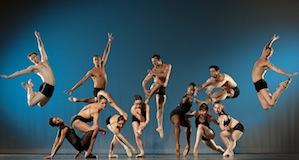Stillwell: First-Class First Impression
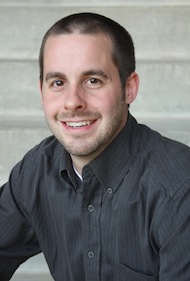
Rare and delightful is the discovery of a new (to me, at least) composer, springing fully formed, as it were, from the head of Apollo.
The setting was Brenden Guy’s Celebration of Bay Area Music on Sunday, in the First Unitarian Universalist Church — a beautiful hall, itself a discovery every time.
The music: the premiere of Joseph Stillwell’s Clarinet Quartet, performed by Guy, violinist Kevin Rogers, cellist Erin Wang, and pianist Aaron Pike.
The quartet, which Guy said required repeated requests to his former S.F. Conservatory schoolmate, consists of two brief movements (see the composer’s description below), and yet the impression is as powerful as if encountering a lengthy work. The music is complex and yet instantly appealing, gorgeously tonal but not “old-fashioned” (as, surprisingly, Mason Bates’ new work turned out to be at the San Francisco Symphony American Mavericks Festival last week). The first movement is simply beautiful, the second packs driving energy.
This called for some research. Stillwell, 27, was born and educated in Milwaukee, came to the S.F. Conservatory of Music for his master’s, and composed works such as Sonata Notturna, the orchestral Music for a Forgotten City (winner of the Conservatory’s 2010 Highsmith Composition Competition), String Quartet No. 1, and Two Poems of William Butler Yeats for piano or chamber orchestra. Stillwell’s program notes for the Clarinet Quartet:
The idea of composing a chamber work for clarinet has been on my musical to-do list for years. In fact, a number of times I began sketches for such a piece, though all occupied a much lighter emotional landscape than the piece on this program. It was not until Brenden Guy and Kevin Rogers approached me this fall that the work truly began to take shape. The addition of violin to the instrumentation immediately suggested a much more serious musical language than I had previously envisioned. And while I typically do not subscribe to the notion of composition as self-expression, I cannot help but consider this piece my most personal to date.The work is cast in a two movement, slow¬fast form. The first movement, marked Adagio serio begins with a somber melody that appears in a number of different guises throughout the movement. The unfolding of the movement reflects my desire to employ a more organic approach to composition without sacrificing formal integrity. The movement is somewhat indebted to the Aaron Copland Piano Quartet, the study of which provided me with solutions to certain problems presented by my musical material.
If the first movement seems to look inward emotionally, the second, “Allegro con malizia” (with malice), is surely an outward reaction to such inner contemplation. The opening bars of the movement are from a discarded sketch for my String Quartet No. 1. I loved the rhythmic and emotional intensity the material possessed but couldn’t make it work at the time. Happily, those measures seemed the perfect conclusion for the present work, and quickly took on a life and direction all their own.
Arab-Israeli Musaique at the JCC
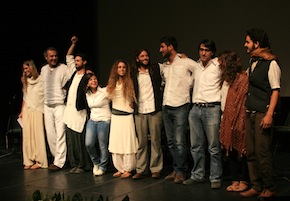
Musaique was founded in 2008, when Israeli Lee Ziv and Jordanian Jamil Sarraj played together at a United Religions Initiative assembly in Amman. Less than a year later, 20 musicians from four countries, three religions, and three languages met in Shantana, Jordan, for four days of playing music.
Today Musaique is a nonprofit organization, a network of musicians from throughout the Middle East, including Israelis, Palestinians, Jordanians, Egyptians, Muslims, Christians, and Jews, “who come together to build bridges for peace in a style drawn from the common musical heritage they share: a fusion of ancient, sacred music and prayer, with new musical instruments and genres.”
The concert will be preceded by a Shabbat Dinner: Unplug and Eat Together, where local writers will read short stories “relating transformative experiences they have had through food, while diners enjoy a Middle Eastern repast.”
In addition to the concert at Kanbar Hall, Musaique is also here to accept an award at the URI annual Circles of Light Fundraising Gala.
Oakland Ballet and 'The Power of Many'
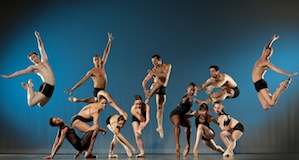
Photo by David DeSilva
The company, funded by Ronn Guidi in 1965, has a distinguished history, including unique contemporary reconstruction of works from Serge Diaghilev’s legendary Ballets Russes. The company excelled with revivals of works by Kurt Jooss, Michel Fokine, Charles Weidman, and Antony Tudor, and the first restaging of works by Bronislava Nijinska in the U.S. Also championing American masterpieces, Oakland Ballet has presented Eugene Loring’s Billy the Kid, Ruthanna Boris’ Cakewalk, and Agnes de Mille’s Fall River Legend. The company has also produced works by local choreographers Val Caniparoli, Carlos Carvajal, Margaret Jenkins, Alonzo King, Michael Lowe, and Amy Seiwert.
The program at the gala will featuring the choreography of Artistic Director Graham Lustig, followed by dessert with the dancers, live and silent auctions featuring luxury vacations, an in-home dinner party prepared by a renowned Oakland chef, and the opportunity to appear in Lustig’s Nutcracker in December.
S.F. Conservatory Così
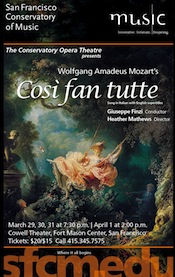 San Francisco Opera Theater presents Mozart’s Così fan tutte in Cowell Theater, March 29–April 1, under the baton of San Francisco Opera resident conductor Giuseppe Finzi.
San Francisco Opera Theater presents Mozart’s Così fan tutte in Cowell Theater, March 29–April 1, under the baton of San Francisco Opera resident conductor Giuseppe Finzi. Heather Mathews is stage director, Peter Crompton the set designer, and Maggie Whitaker the costume designer.
Student singers are double-cast in the four performances on March 29 and 31, and March 30 and April 1, respectively: Julie Adams and Jessie Neilson (Fiordiligi), Kate Allen and Raquel Fatiuk (Dorabella), Maya Kherani and Sarah Young (Despina), Efrain Solis and Ryan Bradford (Guglielmo), Sergio Gonzalez and Sydney Ragland (Ferrando), and Randall Bunnell and Cole Grissom (Don Alfonso).
Besides the opera itself, consider that past Conservatory productions often served as introductions to young singers who went on to become stars. How great it is to listen to a student performance, perk up your ears, and say, “That young woman, let’s see what her name is — aha!, Elza van den Heever — may yet become a famous singer.” And so it came to pass.
Music in the Schools Benefit
Benjamin Simon and Kris Yenney conduct the Palo Alto Chamber Orchestra in an afternoon of music to benefit the Music in the Schools Foundation on March 25 in Costaño Elementary School. The nonprofit organization is dedicated to providing music education classes to preschool and elementary school students in East Palo Alto’s Ravenswood School District.All five PACO orchestras will perform, along with the Tangela Duo, recent prizewinners. Ensembles from the Willow Oaks Violin Project and the Green Oaks Choir join the event.
S.F. Symphony Centennial, Thomashefskys on PBS
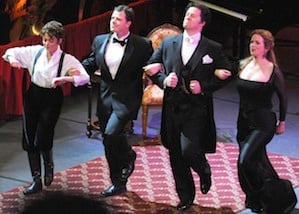
It’s a doubleheader for Michael Tilson Thomas on public television’s Great Performances series next week: the San Francisco Symphony’s centennial season opening gala from last September, with Itzhak Perlman and Lang Lang, between March 30 and April 3; MTT’s The Thomashefskys: Music and Memories of a Life in the Yiddish Theater March 29–April 3. For local broadcast information, see KQED-TV.
The gala program will also be released on DVD and Blu-ray April 1; Thomashefskys on DVD April 24.
Fanfare for a New Century will be shown as a two-hour special: first a documentary about the orchestra, hosted by Amy Tan, then the concert, including Mendelssohn’s Violin Concerto with Perlman and Liszt’s Piano Concerto No. 1 with Lang Lang. See a preview of the program.
The Thomashefskys — which started in Davies Symphony Hall and was then performed in various venues, including Carnegie Hall in New York — is shown in a New World Symphony performance in Miami, conducted by MTT, and featuring Judy Blazer as Bessie Thomashefsky and Shuler Hensley as Boris Thomashefsky, with Ronit Widmann-Levy and Eugene Brancoveanu.
'Pickup Orchestras' and the Facts of Musical Life
Having often used the term “pickup orchestra” without the slightest pejorative meaning, I was surprised by a note from John Vlahos about my Lamplighters review, offering a correction because:The Lamplighter Orchestra is not a pick-up orchestra, but rather a steady orchestra contracted with Local 6 of the Musicians Union since the early 1970s, with provisions for tenure, auditions, etc. Many of the orchestra members have been with the ensemble almost from the beginning. That’s probably why the 22 player orchestra sounds so lush.I asked if it’s possible for union musicians to go from concert to concert to form a “pickup orchestra,” and received the following explanation from Vlahos, long-time board member and former board chair of the Lamplighters:
A good question. I think that it’s a result of the fact that our society is not willing to pay enough for the performing arts other than on the grand scale (the Opera, the Symphony, Broadway, etc.), that most performing arts organizations cannot pay enough money even to their “house” orchestras to allow the players to fully earn a living. (Actually, even on the “grand scale,” musical artists and organizations are suffering, witness the bankruptcy of the venerable Philadelphia Orchestra.)Thus, a company like the Lamplighters pays through its contract negotiations as much as it can afford, but the musicians, in order to make ends meet, have to play elsewhere, sometimes on a “pick-up” basis, sometimes on a regular basis that does not conflict. Local 6 is well aware of this situation and understands both the plight of companies like the Lamplighters and also the needs and concerns of its member musicians.
It’s probably because of this mutual understanding of each other’s needs, constraints, limitations and problems that accounts for the excellent and mutually supportive relationship that has existed between the Lamplighters, the union and the individual loyal Lamplighter Orchestra players. We all realize that we’re in this together. We are proud and very appreciative of our wonderful orchestra.
Bach for a Buck (Minus a Penny)
It sounds too good to be true, but it comes from a reliable source, so give it a try. On March 21, J.S. Bach’s 262nd birthday, eOne Music relaunches the storied Bach Guild imprint with The Big Bach Set, featuring over nine hours of music, on Amazon.com — for 99 cents. That’s only for one day and only from Amazon, though, beginning March 22, it’s still a good deal — $9.99 for the collection, available for download from all digital retailers.The set includes a cross-section of Bach’s most beloved works, including the entire Mass in B Minor, the harpsichord concertos, orchestral suites, and all six “Brandenburg” Concertos. Artists include Joseph Szigeti, Anton Heiller, Paula Robison, Kenneth Cooper, and András Schiff. Among the conductors are Johannes Somary, Antonio Janigro, and Felix Prohaska.
The Bach Guild, founded in 1948, was created to address a gaping hole in the record catalog. Brothers Seymour and Maynard Solomon, having borrowed $10,000 from their father, started a label with the intention of recording every Bach cantata composed, and the project expanded from there, offering in the long run world premiere recordings of Vivaldi’s La Cetra, Haydn’s Mass for St. Theresa, and Lord Nelson Mass, as well as recordings of more than 60 of Bach’s 300+ cantatas.
Opera and the Brain
When I first read about neurosurgeons trying to locate the area of the brain where opera is processed, I wondered about the mysterious appearance of a large tumor or malformation:... during the first group rehearsal, [soprano Sandra Marante] collapsed. The scans showed a golf ball-sized Arteriovenous Malformation, or AVM, in her right temporal lobe, the area of the brain responsible for functions related to memory, speech and music.... but then I received this e-mail from Tom Rossi (published with permission):Northwestern neurosurgeon Dr. Bernard Bendok suggested Marante undergo MRI scans while listening to and thinking about opera music to identify which regions of the brain she used to process music. The “functional MRI” technique is typically used to assess a patient’s brain activity when speaking and moving, but not for something as specific as opera.
While in the MRI machine, Marante listened to several operas and visualized singing them.
The images showed that opera singing engaged many parts of her brain — like a symphony orchestra, Bendok said. It also showed that the mass was in a spot far enough from these areas that he could comfortably recommend surgery and plan for it in a way that would minimize risk to her speech...
Janos, this is the same thing that happened to me, twice, the first one at the age of 29 and then 2½ years later.The thing is that a diagnosis of an AVM, at least at the time, was a “best guess” at best. Mine was identified, after various serious symptoms hit suddenly, by an MRI. All that could be seen was a golf-ball sized “thing” that was white in the film and the doctor said it had to be blood. He and the later super-surgeon that operated on me hypothesized that it was specifically a cavernous malformation that had, as they tend to do, sprung a leak.
A year later, a study came out of Yale that PPA, the active ingredient in almost every cold medicine at the time, was somewhat likely to cause a brain hemorrhage...in women. There are various reasons that a biological study might concentrate on one gender and I, for some reason, never investigated further. But at any rate, I had been taking quite a bit of cold medicine and I think that might have been the cause. For better or for worse, the real answer is unknowable. PPA, however, is no longer sold in the U.S.
It’s been an incredible journey since then and I still suffer the consequences. You’ll, no doubt, appreciate the irony that I was working on a Ph.D. in neurobiology when the first one hit. I hope Sandra Marante fares better than I did with her voice, although it was the near loss of it that led me to take my first voice (opera) lessons.
Major Grant for Monterey Jazz Festival
Monterey Jazz Festival received $285,000 in grants, including $225,000 from the Surdna Foundation, for the support of the Next Generation Jazz Festival and Next Generation Jazz Orchestra through 2015.The orchestra selects the best high school jazz musicians in the country to represent the Monterey Jazz Festival. In addition to performing at the festival, the orchestra tours domestically and internationally; the next tour is scheduled for June to Canadian venues.
Other new grants are $50,000 from the National Endowment for the Arts, and a $10,000 NEA Jazz Masters Live Program grant to support the Festival’s Artist-In-Residence, Commission Artist, and Showcase Artist for the 55th Monterey Jazz Festival in 2012.
Schwabacher Debut Recitals
The 30th Schwabacher Debut Recitals series will present tenor Daniel Curran and bass Adam Lau with pianist Robert Mollicone on April 22; and soprano Nadine Sierra with pianist Tamara Sanikidze on April 29. Recitals are given in Temple Emanu-El’s Martin Meyer Sanctuary.The series presents recitals by artists who have participated in Merola and Adler programs. They have been endowed in perpetuity by the late James Schwabacher, singer, scholar and teacher, and a cofounder of the Merola Opera Program. Schwabacher Debut Recitals have introduced the artistry of such now-famous singers as Susan Graham, Anna Netrebko, Deborah Voigt, Brian Asawa, and Thomas Hampson.
Changes at San Francisco Ballet School
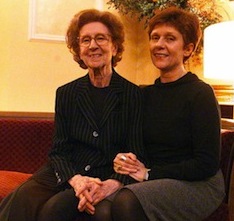 Odette’s Ordeal, the best local dance blog, has a complete report on the change at the top of the San Francisco Ballet School: Lola de Ávila, “the soul of Giselle” and the school’s associate director 1992–1999 and 2006 to now, is leaving, and Patrick Armand becomes her successor.
Odette’s Ordeal, the best local dance blog, has a complete report on the change at the top of the San Francisco Ballet School: Lola de Ávila, “the soul of Giselle” and the school’s associate director 1992–1999 and 2006 to now, is leaving, and Patrick Armand becomes her successor. The title is associate director, because San Francisco Ballet Artistic Director Helgi Tomasson has both the title and responsibility of heading the school.
Ávila is returning to her home in Spain, planning to oversee operations of her mother’s organization, the Maria de Ávila Ballet School.
Chora Nova Program: Schubert and Schumann
Chora Nova, a 60-voice chorus based in Berkeley, will perform Schubert’s Mass in G and Schumann’s Requiem für Mignon, in addition to short works by both composers, on March 25 in Berkeley’s First Congregational Church.Performing under the direction of guest conductor Bruce Koliha will be soloists Rita Lilly, Michelle Baroody, Jonathan Smucker, and Paul Murray. The chorus will be joined by singers from Oakland’s Pacific Boychoir Academy.
The lesser-known Requiem für Mignon is a setting of a scene from Goethe’s Wilhelm Meister’s Apprenticeship, an enormously influential novel, which prompted numerous musical works. Other pieces by Schumann are “Bei Schenkung eines Flügels,” written for his wife, Clara, as well as “Zigeunerleben,” “Ländliches Lied,” “In Meinem Garten,” and “Beim Abschied zu singen.”
Brugger Tops Western Region in Met Audition
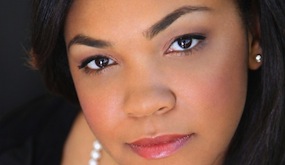 Merolina Janai Brugger placed first in the Western Region of the Metropolitan Opera National Council Auditions last week, and she became one of the five finalists winning $15,000 awards on the Met stage at the Grand Finals.
Merolina Janai Brugger placed first in the Western Region of the Metropolitan Opera National Council Auditions last week, and she became one of the five finalists winning $15,000 awards on the Met stage at the Grand Finals. Finalists also received invaluable career exposure: the audience for the auditions included opera executives, artist managers, and music critics; some of the biggest stars in opera received their first major recognition as National Council Winners.
Other regional winners are baritone Anthony Clark Evans, tenor Matthew Grills, mezzo Margaret Mezzacappa, and countertenor Andrey Nemzer.
Many of the world’s foremost singers, among them Renée Fleming, Susan Graham, Thomas Hampson, Ben Heppner, Jessye Norman, Samuel Ramey, Frederica von Stade, Deborah Voigt, and Dolora Zajick, have received awards from the National Council. (Graham, Hampson, Voigt, and Zajick also participated in San Francisco Opera Center programs.) Annually, approximately 100 former auditioners appear in Metropolitan Opera productions.
From Our Far-Flung Correspondents: DC, NY, LA
Life at the National Without Domingo
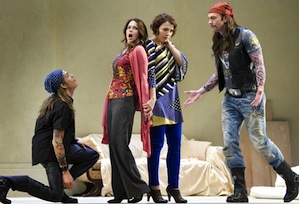
Photo by Linda Davidson
How is The Washington National Opera doing without Placido Domingo at the helm? Very well, thank you, to judge from its final performance of its production of Mozart’s Così fan tutte on Thursday.The excellent cast had reached close to the level of an ensemble performance, a treasured mark and choice experience, under the leadership of the company Music Director Phillippe Auguin. [Editor’s note: About the current WNO leadership, two of the executive group replacing Domingo have important local connections: Francesca Zambello was San Francisco Opera’s artistic adviser for S.F. Opera from 2006 through 2011, and for the completion of the Ring cycle, which she directed. Christina Scheppelmann was artistic administrator here 1994–2001.]
The production from Seattle, was Jonathan Miller’s setting in the present time, the two couples in clothes of young swingers today, the men changing to army camouflage fatigues when pretending to go off to join their regiment. Later, their disguises were not as Middle Eastern exotics but as American bikers, complete with arm tattoos and bandannas, the girls changing into “hot outfits.” Meanwhile, the Don Alfonso was in a cool business suit and played by William Shimell as a Goldman Sachs client manager, slick, his singing suave and charmed. Further, Miller inserted numerous contemporary elements, phrases, and references into the text, e.g., the girls were from Georgetown, the boys from Baltimore.
Clearly, while the production was as appealing to a young, new, or untutored an audience as the company sought, the sheer beauty of the music, the singing, and orchestral performance kept the cute and “today-ness” from offending or distracting; it spoke to one who well might have been put off. Elizabeth Futral led as the stronger of the sisters, the opera’s core character, Fiordiligi. Her soprano was fine in all respects, bright, clear, expressive, the final aria moving.
Renata Pokupic was a lively, coquettish Dorabella, her mezzo-soprano fluid and warm in texture. Joel Prieto was a bright Ferrando, a trifle grainy in tone, but lyrical and affecting. Teddy Tahu Rhodes, tall as a basketball center, was more dominating than most Guillermos, his voice so large and resonant as to suggest that dramatic baritone roles are in his future.
Christine Brandes was a best Despina, a firecracker. As the fake notary she drew up the marriage contract on a lap top, of course, that gag that went with the cell phones used by the singers. In a twist at the end, realizing how she has been used by Don Alfonso, she threw his money back in his face and collapsed in tears,The set was simplicity itself, bare walls, four chairs, a little table, a couch, and a mass of large pillow cushions for flopping on. That’s just fine. Economy in opera production is the smartest way to go.
Mussorgsky at the Met
Commanday also attended this production at the Metropolitan Opera and reports:Mussorgsky’s Khovanshchina has to be one of the two or maybe three finest offerings of the Metropolitan Opera this season. The final performance Saturday (broadcast) was deeply moving. The sprawling heroic tragedy moved in a continuous flowing line with a unity previously not experienced.Mussorgsky left a third of the scenes incomplete, including the finale, and died with the opera largely unorchestrated. It was completed first by Rimsky-Korsakov in 1883, reworked by Stravinsky and Ravel in 1913, finally done by Shostakovich 1952–1963. In one final improvement, this production (by August Everding, originally in 1985) utilizes a still-later improved ordering of the six scenes. Remarkably, the score, conducted with big shape, strong line, and deep expressiveness by Kirill Petrenko (music director–designate of the Bavarian State Opera, succeeding Kent Nagano), sounded consistently in one style, Mussorgsky’s.
Famously, the cast calls for a wealth of grand Russian voices, provided generously in this production: Anatoli Kotscherga, a fearsome Ivan, looming large in person and capacious bass; Vladimir Galousine, the fiery Golytsyn, of a driving, possessive tenor voice; Ildar Abdrazakkov as Dosifei, spiritual leader of the Old Believers, erect as a pillar, his bass wedging out powerfully; Misha Didyk, as Andrei, lithe and vigorous, like his tenor, a brightly sheathed instrument.
Olga Borodina, as Marfa, was her dominating, dramatically persuasive self, her mezzo-soprano projecting beautifully. George Gagnidze was the mysterious boyar Shaklovity who brings down the Khovanskys for the Tsar, Gagnidze’s bass baritone a vocal realization of an avenging sword. Among other critical singers were John Easterlin, tenor, brilliant as the Public Scribe; and the sopranos Wendy Bryn Harmer and Maria Gavrilova.
And as the all-important People of Russia, the chorus in its multiple castings, Streltsy musketeers, wives, crowd, Old Believers, was the collective star. For Peter Gelb, general manager, the transformation of the Met Chorus from the worst major opera company chorus to one of the best, with the major help of Chorus Master Donald Palumbo, is a star in his crown. Fittingly, after 60 or more Old Believers trudged into their two-story log hermitage, revolving to reveal them all there holding candles, their singing, ever softer, during their immolation drew this epic tragedy to a whispered end.
Britten at Los Angeles Opera
SFCV contributor Lisa Hirsch writes:
LA Opera’s just-concluded run of Britten’s Albert Herring was just as good as last year’s Turn of the Screw, with a superb cast of singing actors and top-notch direction. [I hate "recent," which often means "a long time ago"; this production concluded on Saturday. Alek Shrader, debuting here as Albert, sang beautifully, his light and lovely tenor exactly right for the part. Initially as bashful and repressed as could be, he turned hilarious when demon drink introduced him to the world of sin.Christine Brewer, appearing for once in a comic role, delighted as the prudish, prurient Lady Billows, aptly conveying her outrage. Daniela Mack and Liam Bonner were sly and sexy as the conspirators who get Albert drunk. Jonathan Michie, Stacey Tappan, Robert McPherson, and Richard Bernstein made a superb ensemble of villagers, and Jane Bunnell was both repressive and touching as Mrs. Herring. Ronnita Nicole Miller sang the covertly insolent housekeeper Florence Pike with considerable wit.
The charming production from Santa Fe, designed by Kevin Knight, used roll-on scenic elements for the Herrings’ grocery store and Lady Billows’ living room, clearing the stage for the outdoor King of the May party save for distant Loxford. Paul Curran directed stylishly and affectionately, neatly skating the edge of farce without shirking the humor.
Let's All Hang Out
Interested as I am in exotic musical instruments, I have never heard of the hang. It’s new and very big. Let Helen Wallace explain it in the Financial Times:
Manu Delago, the world’s leading hang player, is demonstrating the instrument, which sits on his lap looking rather like a wok with a dented lid. Unearthly, bell-like chimes ripple into the air, underpinned by a patter of percussive beats. The texture intensifies as he begins to play four-note chords, then licks his fingers and bends the resonant tones on the hang’s surface. People around us stare, mesmerised. It’s hard to believe all this music is emanating from one small convex gong.Neither Delago, a 27-year-old from Innsbruck, Austria, nor the hang have been around for long. The instrument was only invented in 2000. The hang (meaning “hand” in Bernese dialect) was invented by Felix Rohner and Sabina Schärer, owners of PanART in the Swiss city of Bern. They were experimenting with different ways of forming hardened steel to improve its acoustic properties, initially for steel pans.
The hang’s convex top rises to a central dome surrounded by a circle of seven recesses, the tuned tones, while the shell’s lower half has a round resonant opening. It shares qualities with steel pans, Indonesian gamelan, Indian tabla and gatham (claypot drum) but its sound is unique.
When I meet Delago, he’s just flown in from New York where he’s been playing hang, drums and xylosynth with Björk on her Biophilia tour. He has already recorded seven albums, collaborated with jazz artists Bugge Wesseltoft and Didier Lockwood, commissioned composers Peter Wiegold and Milton Mermikides, and formed a duo with clarinettist Christoph Pepe Auer that grew into the quintet Living Room in London (LRIL), led by London Symphony Orchestra violinist and composer Tom Norris.
Later this month LRIL will perform at LSO St Luke’s, and string players from the orchestra will join Delago to premiere his Concertino Grosso. Like many successful 21st-century musicians, Delago and his hang seem at home in all genres of music, from jazz to contemporary classical or stadium rock.

